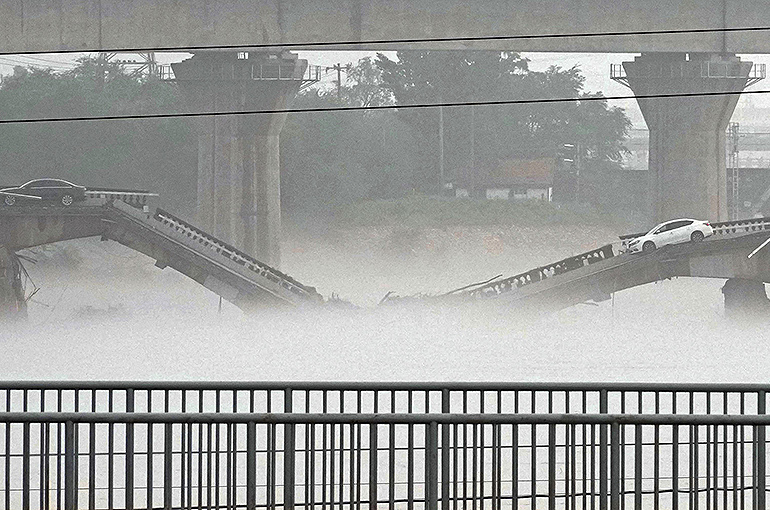 Bridge Collapses in Beijing After Heaviest Rainfall in Over a Century
Bridge Collapses in Beijing After Heaviest Rainfall in Over a Century(Yicai) Aug. 3 -- The Xiaoqinghe Bridge, located to the west of the historic Lugou Bridge in Beijing, collapsed after China's capital was hit by the heaviest rainfall since records started being kept 140 years ago.
The once-in-a-century flooding was to blame, as it caused water flow that exceeded the maximum the bridge was designed to handle, an expert told Yicai.
The flood control authority of Beijing's Fengtai district said late on July 31 that the Yongding River’s waters had surged due to the heavy rains and became worse after upstream floodgates were opened. That led to a pier of the Xiaoqinghe Bridge breaking, with five cars tumbling into the river, it added.
“The water levels of the Yongding and Xiaoqing rivers aren’t high, and that of the latter is often less lower than two meters and occasionally even the riverbed appears,” said a resident who lives near the Xiaoqing. “But when the flood raged on July 31, the waters surged fiercely, which I’ve never seen before.”
The 160-meter-long Xiaoqinghe Bridge spans the Xiaoqing, an intermittent river that is the flood diversion river for the Yongding in flood season.
The Xiaoqinghe Bridge underwent an overhaul not long ago, with Beijing’s city transport commission requiring the winning bidder to reinforce part of the bridge's main beam with steel plate ribs, add extra steel plates for further support, and relay the pavement, according to a notice posted on its website on Sept. 2 last year. Beijing Xihai Municipal Construction Engineering won the bidding with an offer of about CNY3.1 million (USD431,000) on Oct. 8.
Yicai was unable to contact the Beijing Urban Road Maintenance and Management Center, which tendered the project, and the contractor on their public telephone numbers yesterday.
The bridge’s recent revamp should have had little to do with its collapse, Luan Qinghua, a professor at Hohai University, told Yicai. The scale and magnitude of the flooding surpassed what the bridge was designed to withstand, and that mainly accounts for its collapse, Luan said.
Since the heavy rainfalls in Beijing, Tianjin, and Hebei province since July 29, the water levels of the Yongding River at one point reached 3,750 cubic meters per second, the Beijing Water Authority said on WeChat.
Editors: Tang Shihua, Martin Kadiev